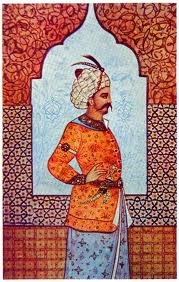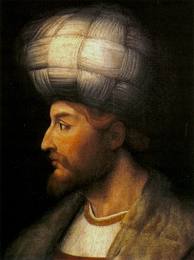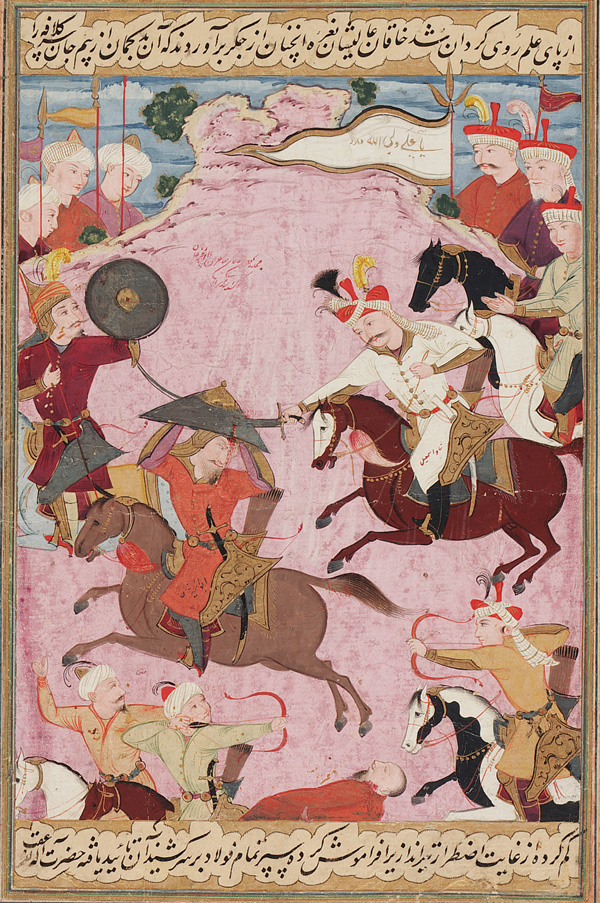(1).jpg)
WAS SHAH ISMAIL A TURK?
That Shah Ismail, who was descended from the famous Sheikh Safiyuddin of Ardabil and therefore called a Safavid, chose a path entirely different from that of his ancestors had surprised everyone at the time. The great-grandfather of the Sheikh was a Kurd from Sinjar. However, the family had become completely Turkified and began to speak Turkish. Sheikh Safiyuddin (1252–1334), who was of the Hanafi school, married the daughter of Sheikh Zahid Gilani, who was also of Kurdish origin, and succeeded him in his post. Even Emir Timur and the Ottoman sultans used to support the sheikh's lodge. Ardabil is near Tabriz.
Ibn Bazzaz’s work Safwat al-Safa provides information—though at times contradictory—about Sheikh Safiyuddin of Ardabil and his family. Over time, the book has been revised and subjected to various distortions and additions.
For example, during the reign of Shah Tahmasp I, an addition was made claiming that the family descended from Imam Musa al-Kazim. This addition does not exist in the original text. Although the Sheikh did claim to be a sayyid (descendant of the Prophet Muhammad), he did not provide a clear explanation. This might have been through a maternal line. Later Persian historians fabricated a genealogy going back to Ali ibn Abi Talib; Ottoman historians such as Ibn Kemal and Muneccimbashi Ahmed Dede declared this to be fabricated.
The claim of the Ardabilis being Turks relies on the reference to him as Pir-i Türk (the Turkish elder) in Safwat al-Safa. However, the same book also states that the Sheikh’s great-grandfather, Zarrinkulah Firuzshah, came from Sinjar, south of Diyarbekir, to Azerbaijan, and was known as al-Sinjani al-Kurdi (the Kurd of Sinjar). It is understood that they were a Kurd-Arab family that had become Turkified.

Fabricated Genealogy
One of the sheikh’s grandsons, Junayd, was married to the sister of Uzun Hasan Bey of the Aq Qoyunlu. Toward the end of his life, for political ambition, he adopted Shiism. When he died fighting the Shirvanshahs, his son Haydar was protected by his uncle, who gave him his daughter in marriage.
Haydar wore a 12-pointed crown symbolizing the 12 Imams and a red cap and turban symbolizing the blood of Imam Husayn ibn Ali; he also dressed his followers in the same way. Because of this, the Anatolian people called them "Kızılbash" (red heads). He too died in battle against the Shirvanshahs like his father. His six-year-old son Ismail succeeded him. Later, he fabricated a genealogy claiming he was a 32nd-generation descendant of Imam Husayn in order to gain prestige.
It is falsely claimed that Shah Ismail belonged to the Hatay Turks. No such tribe exists. He wrote poetry under the pen name "Hatayi." This is derived from the Arabic word khata (meaning error or sin). Ismail rebelled against the Aq Qoyunlu, who had protected him, and erased their state from history. He took his grandfather Uzun Hasan’s throne in Tabriz and slaughtered the Aq Qoyunlu family. Very few were able to take refuge with the Ottomans. He even killed his own mother because she did not renounce Sunnism. Afterwards, he initiated a massive massacre of Sunnis, killing hundreds of thousands. His grandson Shah Abbas completed this genocide, leaving not a single Sunni in Iran. He then attacked the Uzbeks. It is said that after defeating Shaybani Khan, he drank wine from his skull and stuffed his skin with straw to send to Sultan Bayezid II.

Let Me Go to the Shah
Shah Ismail invaded Iraq, Azerbaijan, and Eastern Anatolia. He launched Shiite propaganda in Anatolia, trying to attract Turkmens by promising them principalities. He also showed kindness to those who came to him. Minstrel-poets traveled from village to village promoting this propaganda with verses like, "The gracious Shah says come/find honor at my side/Mountains, bow down, bow down/Let me go to the Shah." The lines “The caravan heading to the Shah” or “Scribe, write my petition to the Shah this way” reflect the support for Iran among the nomads of this period, who were not accustomed to centralized state authority.
One of the agents sent by Ismail, Shah Kulu (also called Shaytan Kulu—Devil’s Slave), tried to spark a revolt in Anatolia in 1511 but was defeated. In 1514, Sultan Selim I marched against Shah Ismail. The Shah, who suffered a heavy defeat, barely escaped with his life, leaving behind his treasures and even his wife on the battlefield. He even lost his capital. He sought help from the German Emperor Charles V. But he died in 1524 at the age of 37 in Serab near Ardabil, living a life of debauchery, without seeing the defeat of the Crusader army at Mohács.
He was extraordinarily skilled in politics and warfare, but also proud, vengeful, bloodthirsty, and dissolute. He belonged to the Ghulat (extreme) branch of Shiism. He wrote poetry in Turkish, Persian, and Arabic.

A miniature depicting Shah Ismail’s victory over the Shaybanids
A Sense of Turkishness in the Shah?
The Safavids ruled Iran for 236 years. Their state was cultured and powerful. But they turned Iran Shiite by massacring hundreds of thousands of Sunnis. They formed alliances with Christian states against the Ottomans. By constantly waging war with Sunni Turkish states, they shed Turkish and Muslim blood. They converted a large mass of Sunni Turkmens to Shiism. Thus, they fractured and corrupted the spiritual structure of Turkdom. They caused a population decline by relocating many Turkmens from Eastern Anatolia to Iran. They weakened Turkestan by exerting pressure on it. For this reason, they played a very negative role in Turkish-Islamic history. They themselves gradually became Persianized. If the Victory of Chaldiran had not occurred, Anatolia would have met the same fate.
Some compare Shah Ismail to Sultan Selim I, who wrote poetry in Persian, claiming that since Ismail wrote in Turkish, he had a consciousness of Turkishness. However, Ismail had neither a sense of Turkdom nor of Islam. On the contrary, he claimed to be Arab. Just as the Shah wrote poetry in Persian and Arabic, Sultan Selim also wrote Turkish poetry. To conclude from his sweet promises that Turks preferred him over the Ottomans is laughable. If Shah Ismail is being presented as a Turkish dignitary as part of the current trend of “openings” (a political metaphor in Türkiye), it must be understood that his record in terms of religious tolerance and human rights is far from favorable. Respecting an enemy is one thing; praising him with qualities he never had is another. This is akin to erecting a statue of Stalin in Crimea.
Those who accuse Sultan Selim I of an Alevi massacre never mention the Safavids. It is true that Alawites in Anatolia who aided the Shah were killed. But this cannot be said of all Alawites. Otherwise, it would be difficult to explain the existence of Alawites in Anatolia today, numbering in the millions. In the Ottoman Empire, those who disrupted order and unity were punished—even if they were from the dynasty. Compared to the Sunnis who died on this path, the Alawites are not even mentioned. However, in the case of the Safavid massacre, merely being Sunni was enough to be killed.
.jpg)
Önceki Yazılar
-
THE FIRST UNIVERSITY IN THE WORLD WAS FOUNDED BY MUSLIMS3.12.2025
-
WHO BETRAYED PROPHET ISA (JESUS)?26.11.2025
-
IT HAS BEEN MORE THAN 100 YEARS SINCE ITS ABOLITION, BUT... IS THE CALIPHATE BEING REESTABLISHED?19.11.2025
-
GREETINGS TO YOU, O OTTOMAN SANJAK!…12.11.2025
-
ROTHSCHILDS BROUGHT THE END OF THE OTTOMAN EMPIRE!5.11.2025
-
SHEIKH BEDREDDIN, SON OF THE QADI OF SIMAVNA29.10.2025
-
THE ROOTS OF THE ENGLISH POLITICIAN IN TURKEY – THE TRAGIC END OF ALI KEMAL BEY22.10.2025
-
WHERE IS THE RED APPLE?15.10.2025
-
THE ABBASIDS IN ANATOLIA1.10.2025
-
IMAMS AND MUFTIS AS OFFICERS IN THE OTTOMAN ARMY24.09.2025